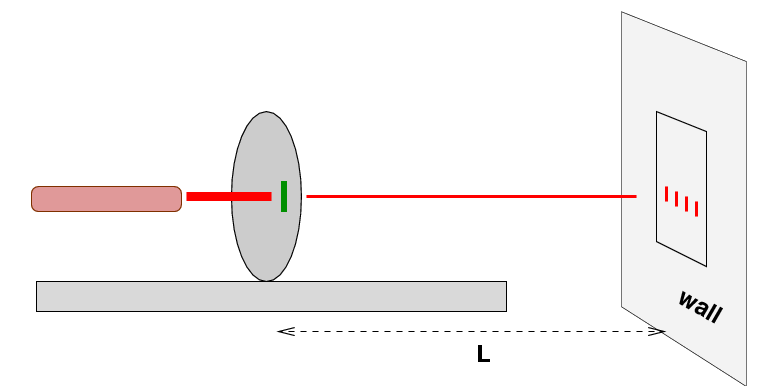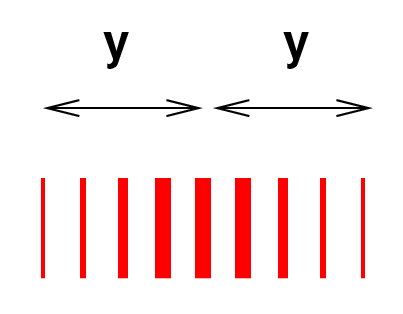Measure the wavelength of laser light

Your job is to use the double-slit interference pattern
to determine the wavelength of light emitted by a laser.
Set up an optics bench, laser, and Multiple Slits wheel
as shown.
Place a piece of paper on the wall, so that the distance
L is more than one meter (the larger, the better).
- You should be able to find positions on the wheel which
have two slits separated by
- d = 0.50 mm
- d = 0.25 mm
- For each position,
- shine the laser through the slits and onto the paper.
Mark the location of a number of consecutive spots near
the center --
at least 5, no more than 11.
- Take the paper off the wall. Pick three
index numbers; for example, m = 1, m = 3,
and m = 5, for one choice of slits.
Then pick a different set of numbers, for example,
m = 2, m = 4, m = 6, for the other pair of slits.
For each index number, measure the distance from
the center of the pattern to the m'th spot.
See example below.

In the example above, Joe is measuring the distance
between the m = 4 spot to either side of the center.
- Make a table of your measurements.
Your table should have six rows: three measurements
for d = 0.50 mm and three measurements for
d = 0.25 mm.
Be sure to include
the separation of the slits, the width of the slits,
the index of the spots you measured, and the
distance y of each spot from the center.
Don't forget the units!
- Now, compute the wavelength of the light.
You have several choices:
- Good: pick one measurement,
write down a formula,
apply the formula.
- Better: use each set of measurements
to compute a wavelength,
the find an average wavelength
and estimate of its uncertainty.
- Best: make a graph which uses all your
measurements to find the wavelength
(and uncertainty).
Use the equation
( L * m )
y = lambda * ( -------- )
( d )
and choose quantities for your axes
so that the slope of the line on the graph
is the wavelength lambda.
Does your wavelength make sense? What is the range
of wavelengths humans can see?
What color is the laser?


